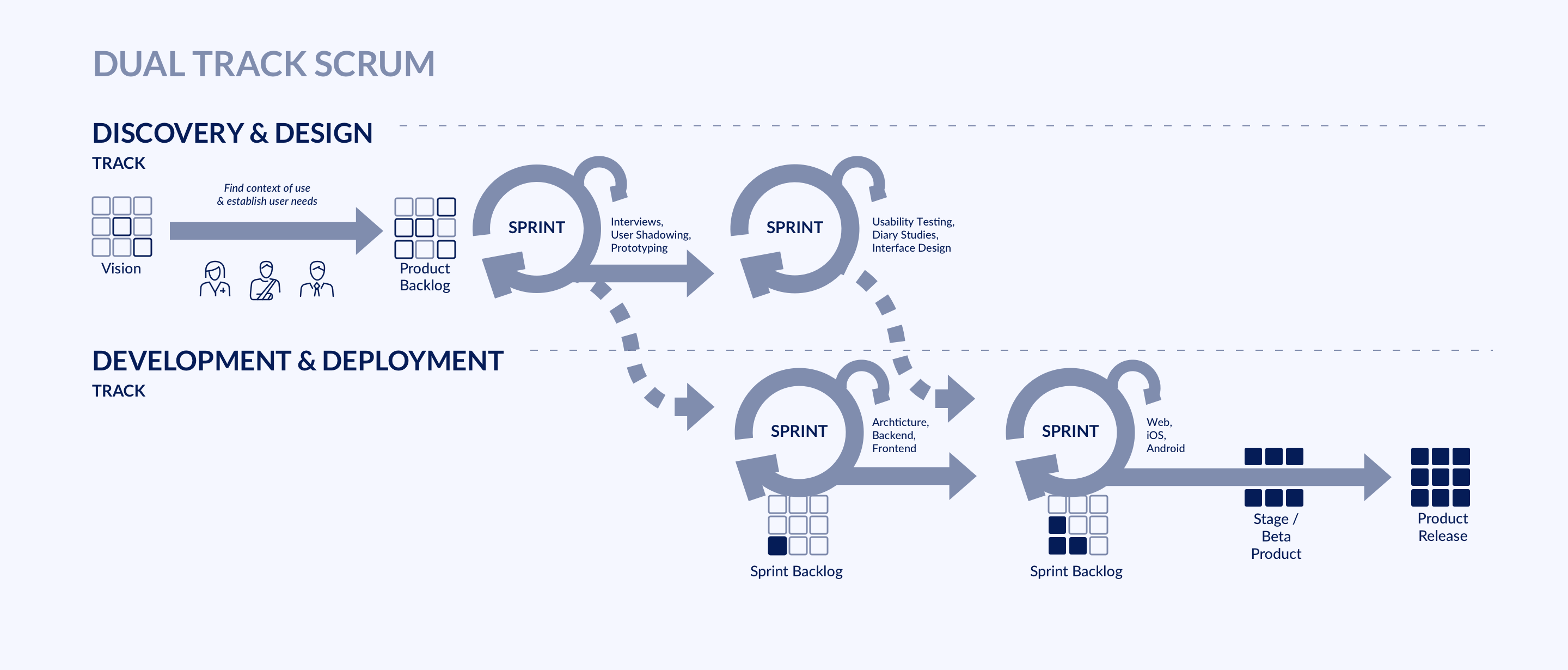ARCUS Hospitals and Medical Practices Development of a Digital Patient Portal
The ARCUS hospitals and medical practices in Pforzheim, Germany, not only wanted to improve service for their patients with a new digital patient portal, they also aimed to relieve the burden on their hospital staff and free up capacity for them to provide even better patient care.
In addition to enabling patients to book appointments digitally, the portal was intended to give patients the opportunity to view their treatment plans online. The goals were to be able to reach patients anywhere and to make important medical and treatment-relevant information available to them. At the same time, the administrative burden on hospital staff was to be reduced. Implementing these multiple technical areas and the large information volume was a challenge not only in terms of technology, but also in design and usability.
ARCUS Hospitals and Medical Practices: Development of a Digital Patient Portal
Practice-Oriented Development
The best digital solutions are created when technical expertise is combined with practical experience. In order to provide the best possible platform for day-to-day operations, inovex used user shadowing and conducted interviews. Two inovex experts first interviewed employees from the medical practices and the ARCUS hospitals’ patient call centre and then observed their everyday duties. Only by actively participating in staff’s everyday tasks could they understand and model all the relevant usage scenarios. Not only did these methods result in greater usability, they also ensured a seamless transition from the old system to the new. Colour coding and abbreviations from the old system, for example, were incorporated into the new one.
inovex also conducted multiple rounds of user testing during the project to ensure that all the functions provided the maximum possible benefits.
myARCUS and ARCUSflow: Platforms for Patients and Staff
The myARCUS portal was created with inovex’s help for patients of the ARCUS hospitals and practices. It allows patients to book appointments with an attending physician via the Internet or an app (Android and iOS) and to receive all the necessary information about their treatment plan (such as checklists to help them prepare for operations, for example). To ensure that no information is missed, patients can also opt to have e-mail notifications and push messages sent directly to their smartphones. Shortly after it was launched, this central point of information had already been used to make over 170 appointments.
In ARCUSflow, a platform has been created which enables clinical staff to view and manage patient appointments. Appropriate interfaces were used to integrate ARCUSflow into the hospitals’ existing IT framework, from where it will be successively expanded into an independent infrastructure.

Technology
myARCUS was designed as a cross-platform app using Capacitor. This enabled the rapid creation of a platform which offers a uniform and responsive user experience on all systems (Android, iOS, and web), and obviated the need for programming porting capabilities.
Angular was used for frontend development, with Kotlin and Spring Boot for the backend. A particular challenge here was that data from many areas had to be managed and modelled. In addition to doctor and patient data, this information also included details of the diagnoses and therapies patients must select when making appointments. Spring Data REST was used to model this large number of specialist areas and thus to ensure greater scalability.
Emphasis on Data Protection
For ARCUS hospitals and inovex, respect for patient privacy was an important development factor. In order to establish the highest possible data protection standards and create a trusted platform, it was important that as much data as possible be stored offline and that no cookies that could be used to track individuals were included. Exchange of data with external platforms has also been kept to a minimum, thus further increasing data protection.
To ensure that sensitive information about patients cannot be obtained simply by anyone knowing their e-mail address, a double opt-in procedure has been implemented. The security experts from inovex – as well as external experts – also subjected all systems to multiple stress tests and used both black box and white box testing, among other methods, to ensure that the platforms were protected against attacks and data theft from the outside.
Agile in all Aspects
The platform was developed by inovex using the agile concept. Although the ARCUS hospitals had not yet used this iterative development approach, staff were quick to grasp the agile working methods. After a brief orientation, two product owners from the hospital environment were appointed to help design the project. The agile approach also met with an extremely positive response from the hospital stakeholders, as it meant that not only were they able to obtain regular status updates during the project phase, but they were also able to actively participate in the project. Stakeholders could contribute new ideas during the regular feedback loops, a process that enabled them to help shape the product.
Digital Solutions Support the Hospitals of the Future
The collaboration between the ARCUS hospitals and inovex has, therefore, resulted in a digital product which has sustainably improved day-to-day hospital administration. The new patient platform has meant a reduction in phone calls and has freed up staff capacity. It is also expected to lead to fewer missed appointments.
For the patients, a portal has been created which they enjoy using to book their appointments and receive information. At the same time, the platform has created a basis that will facilitate the integration of further systems and thus advance the digitization of ARCUS hospitals.
As a positive side effect, the development of the ARCUS hospitals patient portal, with its strong emphasis on IT security, has already laid the foundations for multiple subsidies under Germany’s Hospital Future Act (KHZG).
Project note







